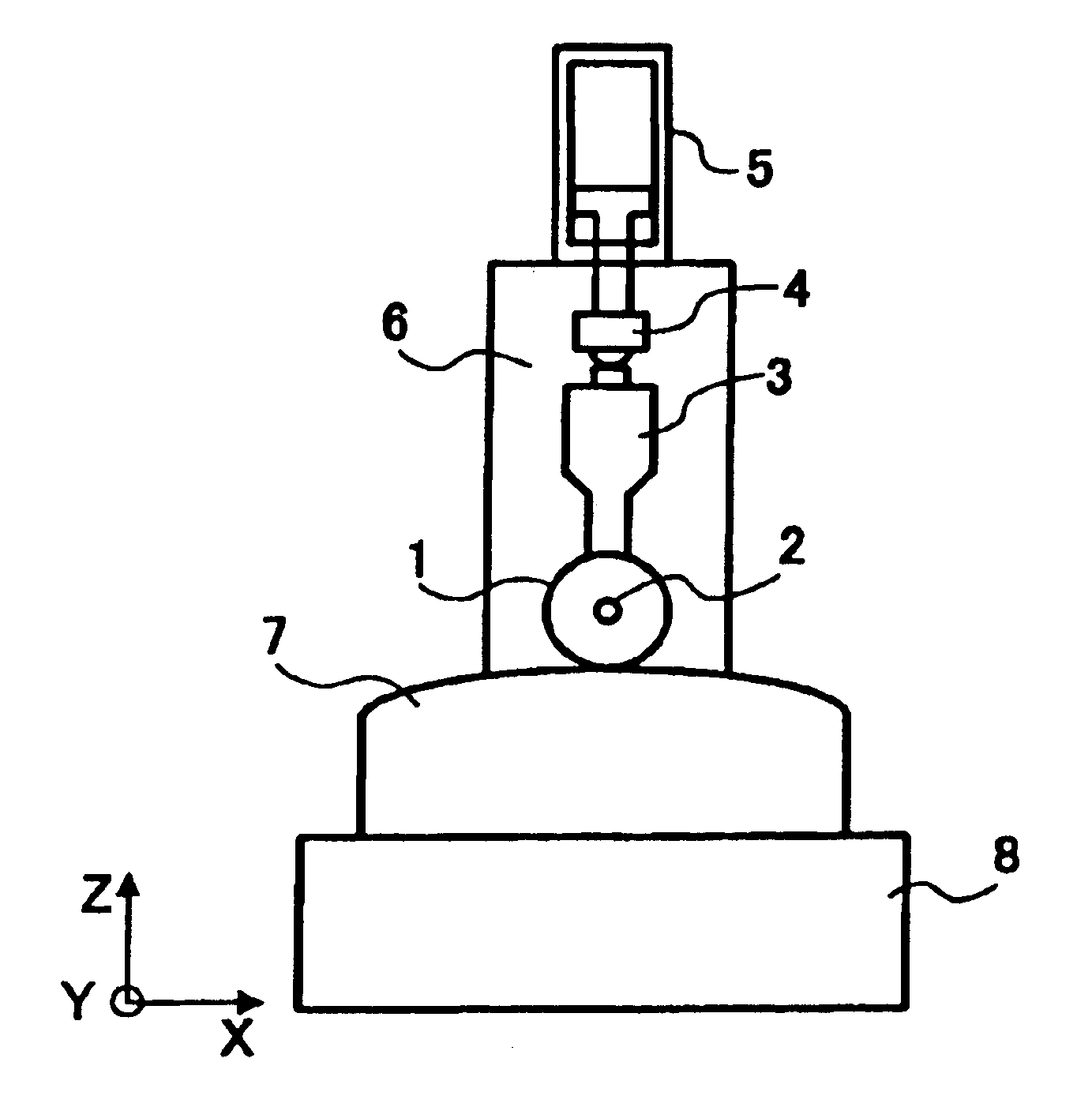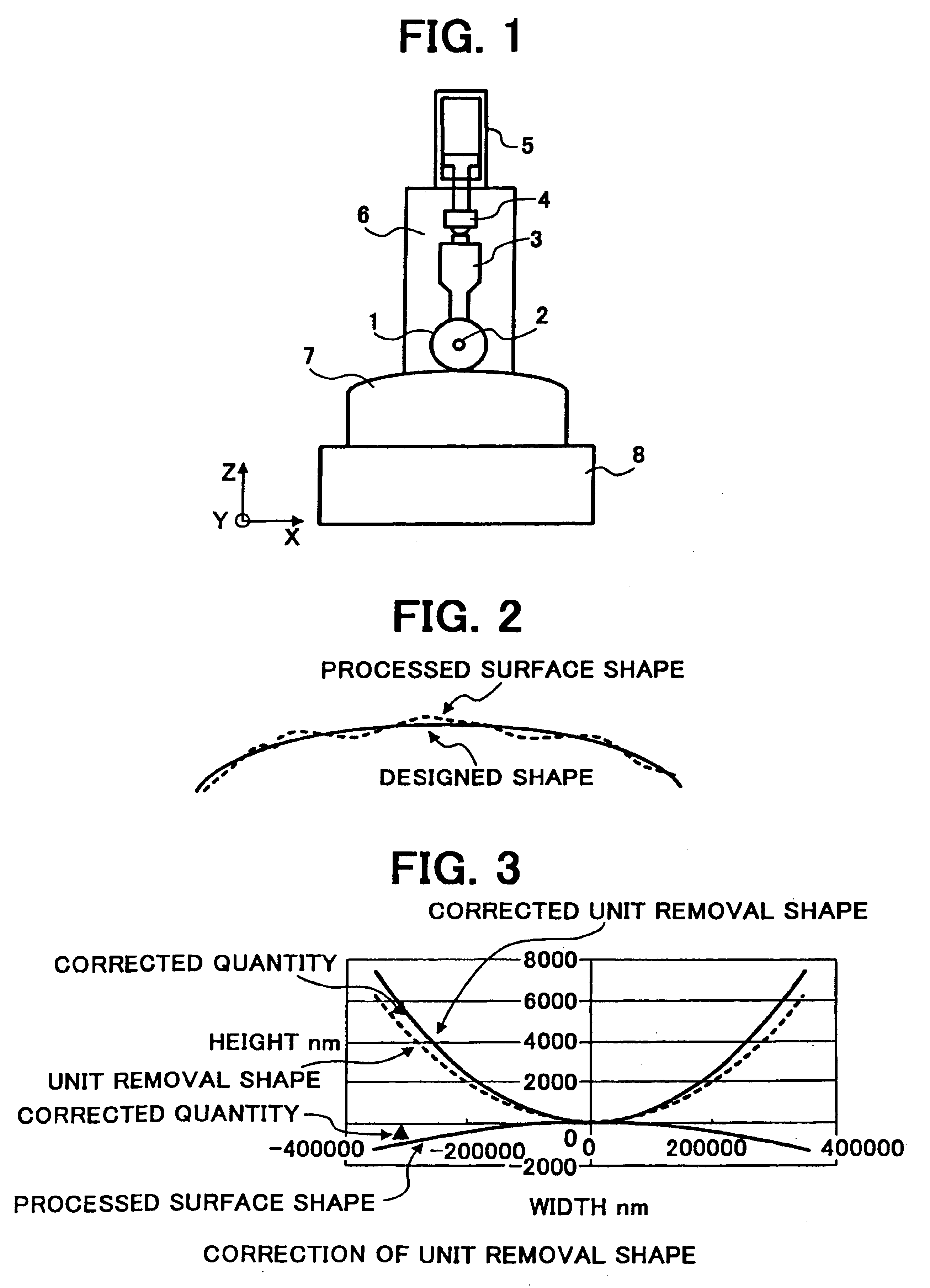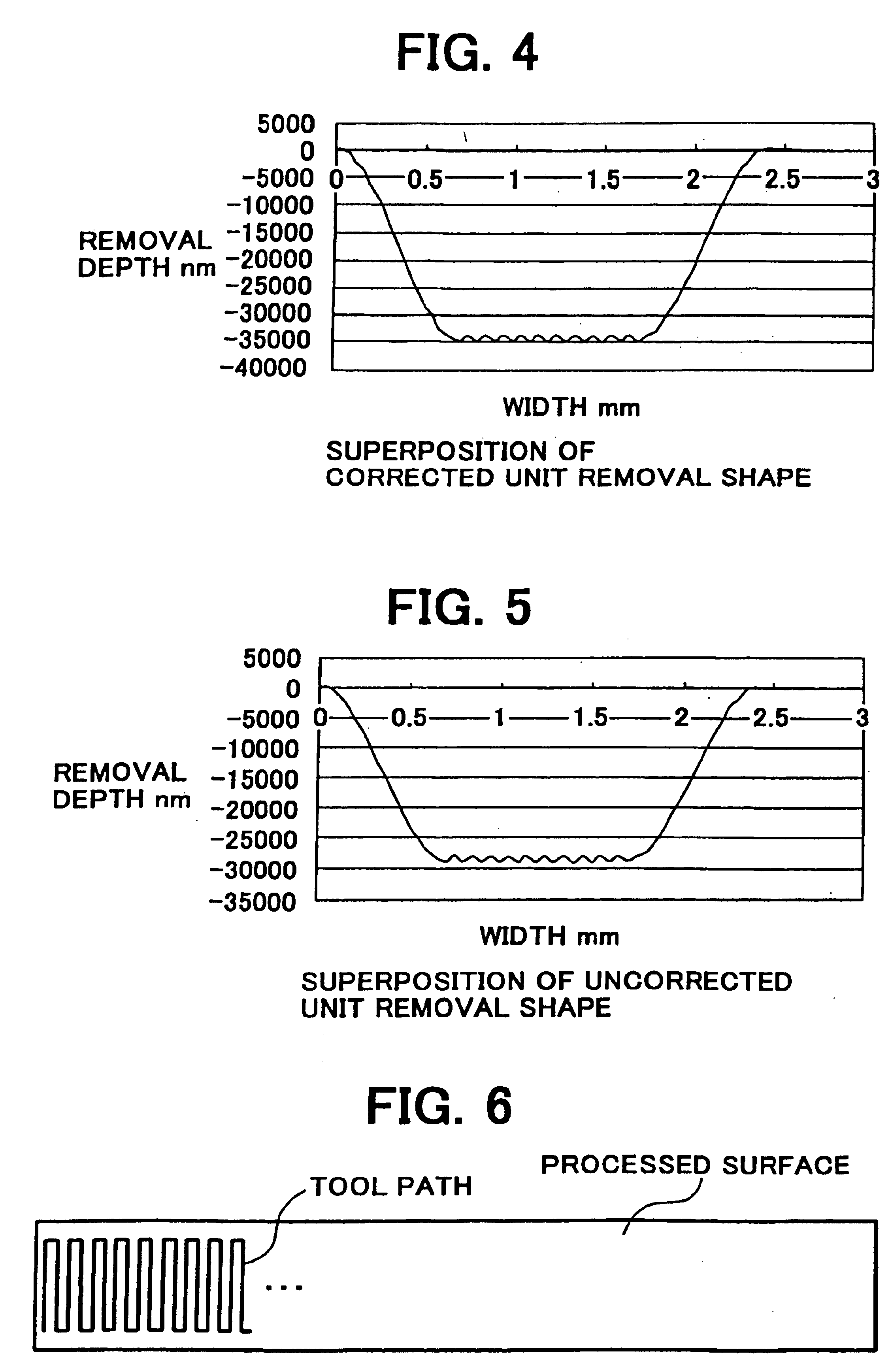Method for processing surface and apparatus for processing same
a processing surface and surface technology, applied in process and machine control, process control, instruments, etc., can solve the problems of large tolerance of actual removal depth with respect to target removal depth, affecting processing precision, and relationship described above not being corrected in response to the shape of processed surface, etc., to achieve high curved surface precision
- Summary
- Abstract
- Description
- Claims
- Application Information
AI Technical Summary
Benefits of technology
Problems solved by technology
Method used
Image
Examples
embodiment 1
[0052](Embodiment 1)
[0053]When a convex spherical surface having a curvature radius of 50 mm is processed, a unit removal shape obtained by processing a plane, for example, a removal shape formed by thrusting a rotating tool against the plane for one second under a specified condition, is corrected to cope with the curvature radius of 50 mm. As shown in FIG. 3, the unit removal shape is disposed so as to abut by vertex against the convex spherical surface having the curvature radius of 50 mm, and the unit removal shape is deformed in the same direction as a vertical direction (normal direction) and by the same quantity as a moving quantity, the vertical direction and the moving quantity being observed when the convex spherical surface is developed into a plane. A result obtained by such deformation is shown in a graph of a unit removal shape after correction. An axis of ordinates indicates a depth of the removal shape, where a unit removal shape having a depth of about 6 μm is corre...
embodiment 2
[0057](Embodiment 2)
[0058]FIG. 6 shows a metal mold for molding a long-scale optical device. In this case, processing is performed on a tool path as illustrated. The worked surface is a free curved surface, where the curvature radius is changed depending on a position of the worked surface. There is a processed area having a length of about 200 mm in the main scanning direction and a length of about 3 mm in the sub-scanning direction. The curvature radii with respect to two directions of the main and sub scanning directions perpendicular to each other for an area divided into 40 sections in the main scanning direction are obtained by use of a computer. Here, coordinates of three points arrayed on a main bus-bar in an area 1 shown in FIG. 7 are first calculated by use of the following design equations.
(X1−a)2+(Z1−b)2=R2 Equation (1)
(X2−a)2+(Z2−b)2=R2 Equation (2)
(X3−a)2+(Z3−b)2=R2 Equation (3) [0059]where a and b are constants, R is a curvature radius,
b={(X1+X2)(X2−X3)(X1−X2)+(Z...
embodiment 3
[0062](Embodiment 3)
[0063]FIG. 6 shows the metal mold for molding the long-scale optical device. In this case, processing is performed on the tool path as illustrated. The processed surface is a free curved surface, where the curvature radius is changed depending on a position of the worked surface. There is a processed area having a length of about 200 mm in the main scanning direction and a length of about 3 mm in the sub-scanning direction. Simulation is carried out in such a manner that the curvature radii with respect to the two directions of the main and sub scanning directions perpendicular to each other for the area divided into 40 sections in the main scanning direction are obtained by use of a computer. Here, the coordinates of three points arrayed on the main bus-bar in the area 1 shown in FIG. 7 are first calculated by use of the design equations. As shown in FIG. 7, when (X1, Y1, Z1), (X2, Y2, Z2) and (X3, Y3, Z3) are the coordinates of the three points, the curvature r...
PUM
| Property | Measurement | Unit |
|---|---|---|
| curvature radius | aaaaa | aaaaa |
| depth | aaaaa | aaaaa |
| depth | aaaaa | aaaaa |
Abstract
Description
Claims
Application Information
 Login to View More
Login to View More - R&D
- Intellectual Property
- Life Sciences
- Materials
- Tech Scout
- Unparalleled Data Quality
- Higher Quality Content
- 60% Fewer Hallucinations
Browse by: Latest US Patents, China's latest patents, Technical Efficacy Thesaurus, Application Domain, Technology Topic, Popular Technical Reports.
© 2025 PatSnap. All rights reserved.Legal|Privacy policy|Modern Slavery Act Transparency Statement|Sitemap|About US| Contact US: help@patsnap.com



